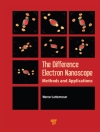Understanding of protons and neutrons, or "nucleons"the building blocks of atomic nucleihas advanced dramatically, both theoretically and experimentally, in the past half century. A central goal of modern nuclear physics is to understand the structure of the proton and neutron directly from the dynamics of their quarks and gluons governed by the theory of their interactions, quantum chromodynamics (QCD), and how nuclear interactions between protons and neutrons emerge from these dynamics. With deeper understanding of the quark-gluon structure of matter, scientists are poised to reach a deeper picture of these building blocks, and atomic nuclei themselves, as collective many-body systems with new emergent behavior. The development of a U.S. domestic electron-ion collider (EIC) facility has the potential to answer questions that are central to completing an understanding of atoms and integral to the agenda of nuclear physics today. This study assesses the merits and significance of the science that could be addressed by an EIC, and its importance to nuclear physics in particular and to the physical sciences in general. It evaluates the significance of the science that would be enabled by the construction of an EIC, its benefits to U.S. leadership in nuclear physics, and the benefits to other fields of science of a U.S.-based EIC.
Board on Physics and Astronomy & Committee on U.S.-Based Electron-Ion Collider Science Assessment
Assessment of U.S.-Based Electron-Ion Collider Science [PDF ebook]
Assessment of U.S.-Based Electron-Ion Collider Science [PDF ebook]
ซื้อ eBook เล่มนี้และรับฟรีอีก 1 เล่ม!
ภาษา อังกฤษ ● รูป PDF ● หน้า 152 ● ISBN 9780309478571 ● สำนักพิมพ์ National Academies Press ● การตีพิมพ์ 2018 ● ที่สามารถดาวน์โหลดได้ 3 ครั้ง ● เงินตรา EUR ● ID 7145655 ● ป้องกันการคัดลอก Adobe DRM
ต้องใช้เครื่องอ่านหนังสืออิเล็กทรอนิกส์ที่มีความสามารถ DRM












